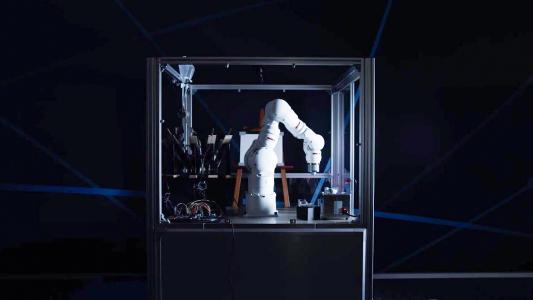Stunning “agar art” grows pictures with bacteria and fungi
Some artists paint with watercolors and acrylics. Others use… bacteria and fungi.
This strange medium is called “agar art,” because each piece is contained within a petri dish filled with a gelatinous substance called agar, used to grow bacteria and other cells.
Agar artists create images in the dishes by rubbing microbes on the dish and letting them grow.
You might have done something similar in your high school biology class, swabbing your cheek, rubbing it on an agar-filled petri dish, and waiting to see what developed.
The difference is that each microbe in a piece of agar art is carefully chosen and painted onto the surface to grow into a beautiful image.
ASM Agar Art Contest
Every year since 2015, the American Society for Microbiology (ASM) has hosted an Agar Art Contest, and the 2020 winners in the “Professional” category were downright stunning.
Joanne Dungo from Northridge, California, won the contest with her submission, “The Gardner,” which featured a mosaic of seven petri dishes and six species of the fungus Candida.
Second place winner Balaram Khamari, a microbiologist in Puttaparthi, India, stuck to one dish for his Agar Art Contest submission, “Microbial Peacock,” but grew several types of microbes.
“I used Escherichia Coli (E.coli) for the body of the peacock while arranging both E.coli and Staphylococcus aureus alternately for the individual tail feathers,” he told Smithsonian Magazine.
“The small colonies around the head of the peacock and the eyeball were home to Enterococcus faecalis, a gut bacterium that produces tiny and distinct colonies.”
Third place went to Isabel Araque and Jenny Oñate from Quito, Ecuador, for their submission, “Micro-Nature in a Spotted Eagle Ray.” To create the ray’s body, they used two Candida species: C. tropicalis and C. albicans.
More Beautiful Bioart
You can view more Agar Art Contest winners below.
While the creators of these pieces are all scientists, there is a non-scientist category that anyone can enter, so if you’d like to try to create your own bioart, you can buy one of the kits sold by ASM partner Edvotek.
We’d love to hear from you! If you have a comment about this article or if you have a tip for a future Freethink story, please email us at tips@freethink.com.
